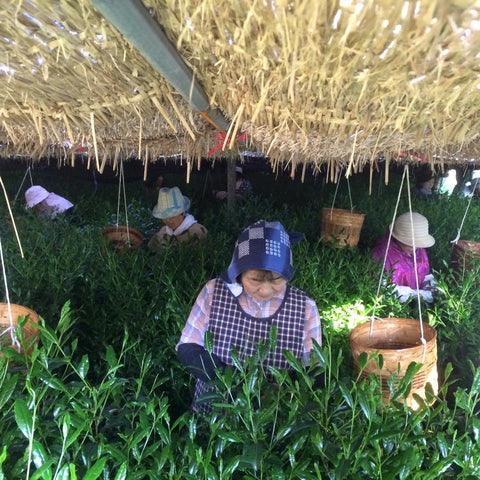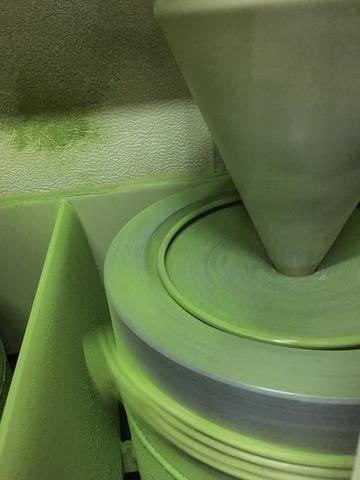This is a quick primer on matcha production. We learned all of this because we work with both tea farms and tea factories. Matcha from small-scale family tea farms / factories are at http://www.yunomi.life/collections/matcha
The manufacturing process of matcha
- Tea fields are fertilized for flavor. The heavier the fertilization, the stronger the flavor. This is one reason why organic matcha is said to be not as good for the same price. Of course, flavor preferences are subjective, and so we've even recruited a farmer who uses zero fertilizer (and zero pesticides).
- Tea plants are shaded for 4-5 weeks after the new buds come out. In general this is spring as spring leaves have the strongest flavor, but lower quality matcha will also come from summer and autumn flushes of leaves. As the year progresses, the leaves have less and less flavor / color.

If machine harvesting, a plastic material covers the hedges directly. If hand-picking (only a very small percentage of matcha produced is hand-picked) then canopy shading is used. The highest quality matcha will use labor-intensive traditional material (straw, bamboo scaffolding).
Note, the shading reduces the antioxidants in the leaf, thereby reducing the bitterness. On the other hand, it also preserves the theanine, creating the umami savory flavor.
- Leaves are harvested by machine or by hand, taken immediately to a factory to be steamed and dried in a special oven. No rolling is done which makes it different from other types of green tea. The resulting leaf is called "tencha" though it's still in its rough state.

The lowest quality matcha can actually be made with special techniques using the rolling machines meant for sencha. In that case, it would be called "mogacha" not tencha, and the resulting powder would be called matcha by some and an imitation by others.
To preserve the leaf for processing at a later date, it can be flash frozen after steaming and before drying.
- The tencha is refined...stems and dust are removed, the leaves chopped into smaller flakes.
The highest quality matcha will be stored in refrigeration for another half year to allow the bitterness to degrade even further.
- The tencha is ground into matcha. This can be done by stone mill (more expensive matcha) or by other pulverization machines...some of which have gotten very sophisticated and are able to produce quite excellent quality.
At this point, as a powder, the matcha's flavor, color and aroma degrades much faster than normal tea, and exposure to light, humidity in the air, should be minimized.






